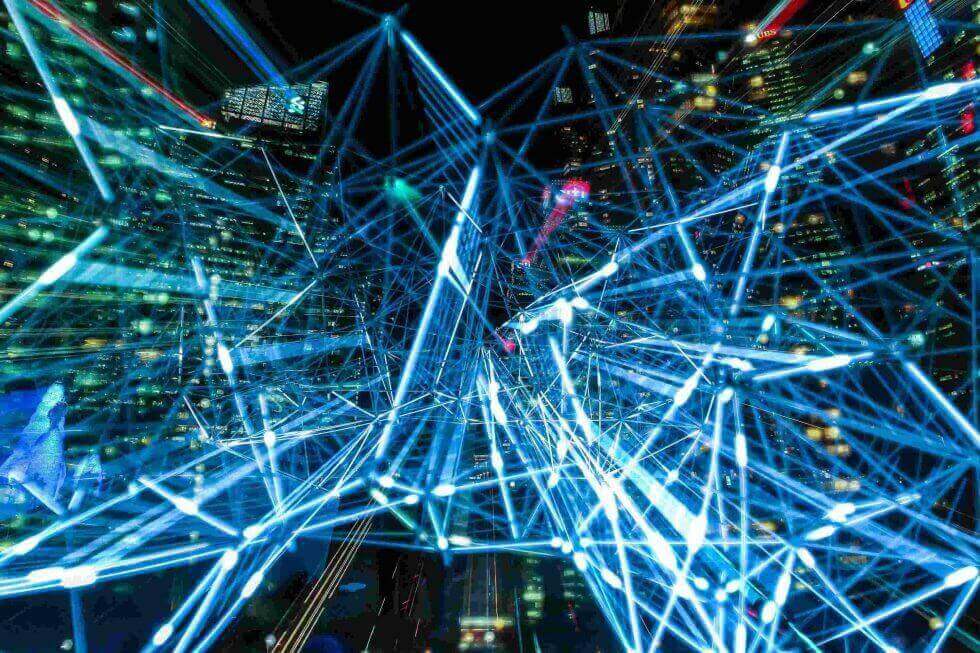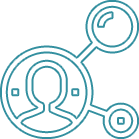The world witnessed a transformative shift when the Web 1.0 paved way for the Internet – a parallel virtual realm unlike anything mankind ever experienced before. Web 1.0 was the birth of the Internet or the read-only web where the sheer purpose was to search for information and read it. The wheel of disruption began to move towards the creation of Web 2.0; bequeathing the immense power of the fourth industrial revolution to the people through digital connectivity and by being virtually social.
The creation of services that we all know and love such as Google and the advent of social networks from Orkut to Facebook, Instagram and Snapchat have allowed access to information and knowledge with a mere click. Human connections are not created within a blink of the proverbial eye through social media. As time moves forward, there will inevitably be another paradigm shift and the question arises how to participate in this convergence to Web 3.0.
Initially computers were the only electronic device connected to Internet, but IoT has enabled even kitchen appliances to restock items and one can order taxi to food through handheld devices connected to World Wide Web.
The new tech age has enabled economies to grow, generating development through innovation, employment and entrepreneurship. Cloud computing and social media is helping small ventures build huge clientele that was earlier impossible without spending huge bucks on advertising. A couple of decades’ back the playing field was even for startups but now the scenario has drastically changed. Startups backed by technology such as Amazon and Facebook have even overtaken giants like oil and gas companies and have become global conglomerates. The multibillion dollar unicorn valuations are becoming the reason of demise of non-technological businesses. Researchers estimate that “the digital economy is worth $11.5 trillion globally, equivalent to 15.5 percent of global GDP and has grown two and a half times faster than global GDP over the past 15 years.”
But many established firms backed by technology are now enjoying the first movers’ advantage and it has become quite hard to compete with giants. A mere glance at these tech companies, such as Google, Microsoft, Facebook, TikTok and Amazon.
Meeting Goliath Head On
With limited resources, taking on tech giants is certainly no easy task. The answer is Decentralized Autonomous Organizations (DAO), backed up by Web 3.0 ultimately and dependent upon Artificial Intelligence (AI) and Blockchain. Artificial intelligence (AI) is a branch of computer science concerned with building smart machines capable of performing tasks that typically require human intelligence. Blockchain can be described as a data structure that holds transactional records and while ensuring security, transparency, and decentralization. You can also think of it as a chain or records stored in the forms of blocks which are controlled by no single authority.
If we link two technologies together e.g., Artificial Intelligence (AI) and Blockchain, we can see that cryptocurrency is the missing link. As far as the AI is concerned as cryptocurrency doesn’t depend on any central third party. Where for blockchain its missing link is most certainly autonomous decision-making. We put these things together, and create something like an organic entity like DAO that lives on the Web.
DAOs are decentralized applications that are not controlled by any single entity. Let us understand it with the example of Facebook. For example, Facebook does not have a single server. It possess multiple servers and is controlled by a single entity. So it is both centralized and distributed across the world. However, it is still controlled by a single entity. For a decentralized system you can never destroy it, making it now easier to create an app that is number one, open source and profitable. This is something that has never been possible before. The previous applications were either closed source like Microsoft Office or Open source like Ubuntu or Firefox. Unfortunately thought, these were financially not viable. Through DAOs, you can make an application that’s both open source and profitable.
DAOs allow you to share your vision with likeminded people, work together and even raise funds for infrastructure, product or service development. The investment is made generally either through crowd funding or Initial Coin Offering. As a result, DAOs can fuel those business models that were previously not possible to create.
DAOs are blockchain based organizations where there is no CEO. In Decentralized Autonomous Organizations, there are dynamic projects and people form dynamic working relationships around these projects. To participate in DAO, you buy in through a coin or token and ownership is recorded in the blockchain. When you become the member of a DAO you are compensated in two ways. First, when the value of your token is increased and second when you earn token while working for the DAO. In DAOs, the priorities are not set from the top management like traditional organizations. In these scenarios, there are active members of community that have identified certain needs and are now working together as it’s in their self-interest as the value of their owned tokens will increase when the value of the DAO will increase.
Being a member of a DAO you can submit a contribution contact explaining what they can do for DAO such as adding a new feature to an application and how their contribution will add value to the DAO. Voting is conducted and the existing token holders decide whether to accept or reject the proposal. If your proposal is accepted, you are paid through token against the work that you put in to add value to the project. Once you have made your deal with the DAO, the contract is recorded in the Blockchain. In case of successfully delivering your work, you will be paid otherwise your contact will be cancelled. Blockchain-native entities built on platforms like Aragon, Colony, District0x, DAOStack etc. are introducing whole new ways of organizing, aligning and rewarding works.
Over the last couple of years, various DAOs have appeared on the horizon. Let’s give a bird’s eye view to a few: NowHerePlastik is a DAO that is working to convert plastic into recourse by adopting circular economy model. Another DAO, Kleros is working as a decentralized court to arbitrate smart contracts. Another entity named Nexus Mutual is aiming to provide cover for smart contract hack or bugs through purchases of Smart Contract Cover.
Definitely, not every business is suited for such an innovative model and structure as a DAO. The absolute concept of a DAO is here to challenge entrepreneurs, investors, and managers and the autonomy of the DAO will become an impactful factor while taking strategic management decisions.


